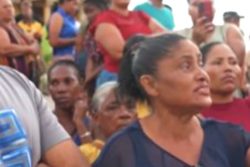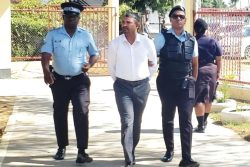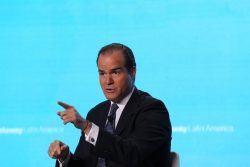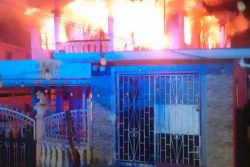Amid the construction of a water reservoir at Nappi in Region Nine and large-scale agricultural plans, the North Rupununi District Development Board (NRDDB) and others have expressed concern about the fate of wetlands in the area and have written to President David Granger seeking their protection.
A statement on March 29th by the NRDDB and the Guyana Policy Forum (GPF) said that recent calls by North Rupununi communities for adjustments to the Inter-American Development Bank (IDB)-funded Sustainable Agricultural Development Programme must be heeded and steps taken to address their concerns.
The statement noted that on March 19, 2018, IDB representatives and high-level government officials met with residents at Nappi during which several issues were raised including the construction of a massive reservoir in the middle of the zone that links the Essequibo and Amazon watersheds during the rainy season. The statement said that residents are understandably concerned about the impacts on the wetlands and the range of biodiversity it supports, and upon which they depend.
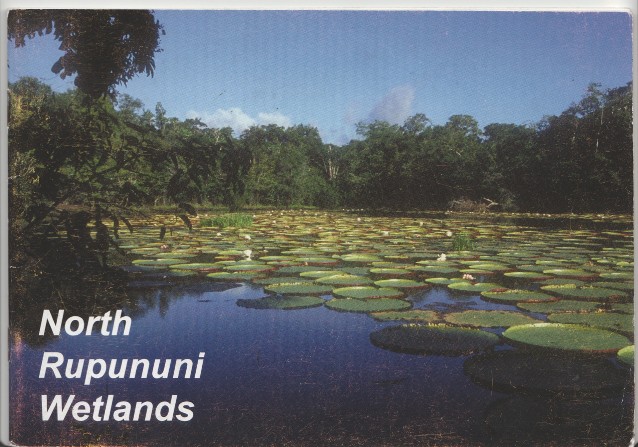
The statement added that it is encouraging that the IDB has undertaken to provide the residents with more information and has promised greater involvement of residents moving forward. However, the statement said that it is worrying that it was only when residents spoke up strongly about their concerns at the Nappi meeting that the abovementioned decisions were made.
“It is noteworthy that since last year, the IDB recognised that consultations done during project preparation were ‘not meaningful’. In its own assessment, the IDB noted that one reason for this was that consultations for the agricultural research centre in Region 9 were done considering Manari as the project site. However, the project site was subsequently shifted to Pirara, located approximately 40 km north of Manari. Because of this, main stakeholders such as the North Rupununi District Development Board (NRDDB) and the 20 communities it represents, were not consulted.
“The IDB also recognised that the construction of the reservoir might significantly convert and/or degrade a critical habitat due to its extension. Even at the original project site, the IDB recognised that the project is in the Rupununi wetlands, an area with high biodiversity value and which provides a range of ecosystem services to the over 8000 indigenous residents who live in and around the area. How project managers deal with the shift to an even more sensitive site remains unclear”, the NRDDB and GPF statement said.
The statement added that the value of the North Rupununi wetlands has been recognised by the people of the Region, who, for over two decades, have called for its special recognition and potential designation as a RAMSAR (Convention on water sites of international importance) site. However, it said that though there have been official pronouncements of support from successive governments, little has been done to make this a reality. The statement added that alarmed at proposed plans to expand large-scale agriculture and other land use activities in the North Rupununi, the communities of the North Rupununi, in February 2017, presented to the APNU+AFC government a position paper making a case for its protection. In June 2017, in a letter to President Granger, the communities, restated the urgent need to protect the wetlands.
The communities proposed that the wetlands be declared an Area of Conservation Interest and that an immediate moratorium be imposed on the granting of new concessions or land-use permits for mining, commercial logging, industrial agriculture or any other activities incompatible with conservation in the said area. To date, despite expressions of support, little has been done to move this forward, the statement lamented.
The statement said that the North Rupununi Wetlands has been shaped over millennia into the world-renowned, biodiverse rich area it is today, and the importance of such areas are increasingly being recognised.
The statement added that residents of the North Rupununi recognise well the role of wetlands as important sources of recharging, filtering and storing freshwater, thereby ensuring water security for the 20 communities and over 8000 inhabitants of the North Rupununi.
It added that the government has been “making all the right noises on the international front regarding protection of water resources. President Granger has recognised that the world’s freshwater supplies are under threat with water stress increasing in many parts of the world. At the World Water Forum in Brasilia several days ago, the President called for conservation of water resources and the protection of the environment everywhere in order to maintain the integrity of the earth’s rivers and lakes. Wetlands are important in this regard”.
The statement cautioned that extractive industries such as mining have already poisoned many of Guyana’s rivers with mining effluent and already such activities are harming pristine areas in the Rupununi.
“Should this continue, the rivers of the Rupununi could end up destroyed as has already happened in other regions of Guyana. It is time that the government move beyond lip-service and implement the sustainable solutions proposed by the indigenous people of the area”, the statement said.
In February this year, the 4.5 million cubic metres water reservoir at Nappi was handed over to Region Nine with the expectation that it would relieve drought conditions in the area. The water reservoir, according to the Department of Public Information, was completed in 2017. It was done as a partnership between the government and Conservation International. Minister of Natural Resources Raphael Trotman during the commissioning ceremony told the gathering that the reservoir, which was completed in approximately six months, should be used to enhance the livelihood of Rupununi residents. The reservoir was built after the Rupununi region suffered a severe drought in 2015/2016. Trotman said that the catchment area is part of government’s commitment to ensuring the residents are never so adversely affected by a drought again. There was no discussion at that point about the possible impact of the reservoir on the Rupununi wetlands.




